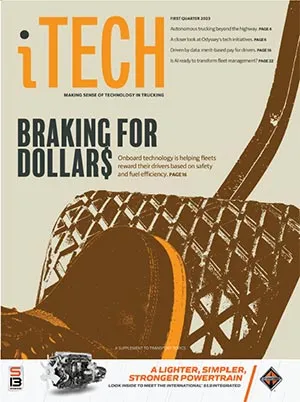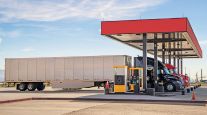Special to Transport Topics
Incentivizing Driver Excellence
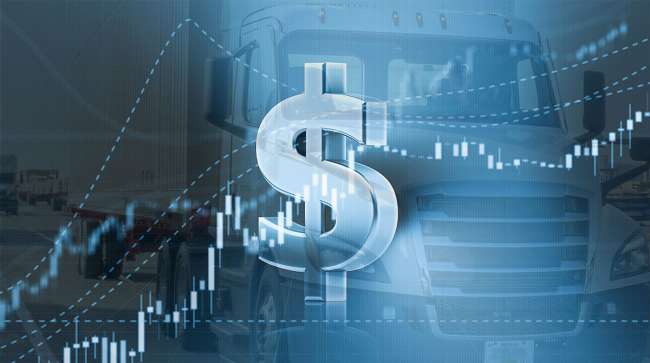
[Find the latest in trucking technology: Explore this quarter's issue of iTECH]
To remain competitive in a persistently challenging labor market, trucking companies and fleet operators are exploring performance-based pay models to help boost driver retention and recruiting.
These programs typically reward drivers with additional pay for achieving high marks on safety and fuel economy, but implementing these incentives in a fair and effective way is only possible through gathering the right information.
The latest in-cab technologies are providing the detailed, real-time data that managers need for these merit-based pay programs while giving drivers instant feedback and coaching to improve their performance and bonus takeaway.
“Things are really pushing toward modifying the pay model to be more encompassing of the realities that the driver faces,” said Darrin Demchuk, vice president of fleet solutions at technology vendor Platform Science.
Q1 iTECH
►Incentivizing Driver Excellence
►Five Questions for Odyssey Logistics' CIO
►Dysart: Tackling AI Fleet Management
►Clevenger: Broader Horizons for Autonomous Trucks
Explore the Issue!
Telematics systems and in-cab applications capture driving habit information that determines how well individual drivers are meeting company safety and efficiency goals in areas including preventable collisions, speed, fuel efficiency and dwell time.
“Our role at Trimble is to provide that core data, the objective data, that can be hard to pull out of all these different systems and enable our customers to make the right choices about how they score drivers and how they incentivize drivers,” said Chris Orban, vice president of data science for fleet management technology supplier Trimble Transportation.
Technology vendors said the scoring and gamification elements inherent to performance incentive programs spark driver interest, engagement and retention.
“If we can all align applications and software and gamification toward positive metrics that reward results, that tends to lead to a highly effective population of drivers,” Demchuk said.
Modern onboard technologies exceed the simple data-gathering capabilities of earlier systems. They include driver training and coaching functions such as highlighting and encouraging behaviors that reduce fuel consumption.

Bouchard
“Quickly, people understood that measuring was one thing, but feedback was the most important aspect,” said Jean-Sebastien Bouchard, co-founder and executive vice president of sales at trucking telematics provider Isaac Instruments.
Real-time feedback is beneficial because “you can’t improve what you don’t know,” Bouchard said. “Then, you need to find a motivation to change that behavior so the driver pays attention to it and wants to do better.”
Isaac’s system generates scorecards for individual drivers based on a company’s chosen parameters.
Sutco Transportation Specialists, a diversified carrier headquartered in Salmo, British Columbia, factors these scorecards into its recently launched performance-based pay model.
Drivers are rewarded monthly for scoring well on safety and efficiency metrics including hard braking, cruising speed and idling, according to Danny Zubot, director of fleet assets at Sutco, which provides general freight, heavy-haul and wood-residual hauling services.
The fleet’s incentive program still is in its early stages and therefore hasn’t yet charted measurable recruiting and retention benefits, but the carrier hopes for noticeable improvements as the data-driven initiative matures, Zubot said.
Implementing Driver Incentive Programs
Transitioning to a performance-based pay model that increases hiring and retention begins with a trucking company identifying its key performance indicators and change-management goals, such as safety and fuel economy.

In-cab technology from vendors such as Isaac Instruments can capture data on driver performance and provide real-time feedback so they can improve their safety and efficiency scores. (Isaac Instruments)
Sources also recommended identifying driver behaviors, such as speed control or lane changes, that correlate with those KPIs.
“We adapted [the technology] to weigh each category based on how important we feel it is as a company,” Sutco’s Zubot said.
Those categories function as inputs for the technology-enabled driver analyses that parse the data collected by the system. Driver scores quantify individual achievements, and trucking companies generally give rewards for each positive behavior a driver accomplishes or for the highest performers in each category.
Isaac’s Bouchard recommended starting slowly and growing the program in accordance with best practices learned during a trial run rather than setting the bar too high at inception.

Orban
Trimble’s Orban emphasized talking to drivers about what incentives they find valuable.
Focusing on using these programs to improve drivers’ quality of life — not just to benefit the business — makes employees feel appreciated and helps improve retention rates, said Demchuk of Platform Science.
“Pay is a significant component to quality of life … and quality of life is all-encompassing for the drivers,” he said. “You want to pay your drivers an appropriate wage that is aligned with the value they’re producing as an employee. … And that’s where a lot of these applications come in.”
Real-Time Analytics And Driver Feedback
Transportation technology has matured to a point where real-time computation is possible. Tasks that once were tedious are now performed more quickly and easily, and multiple devices or apps can interface to build on the value.
“We’ve added things like video records and more advanced geofences,” Orban said. “Now we can see things with much more precision because of advancements in our in-cab GPS systems, auto-arrive and -depart and proof of delivery.”
More abundant and precise data generates better, more accurate driver performance analyses. For example, sensors monitoring pedal touch determine how well a driver smoothly, progressively accelerates, which improves fuel economy and could help earn a bonus. Modern telematics systems that include cameras clearly show the various causes of hard-braking incidents, such as the driver taking action avoiding a collision, rather than earlier models’ tendency to penalize drivers for any hard brake.
“They shouldn’t lose their safety bonus over this because they were doing the right thing to avoid an accident; they were not driving recklessly,” Orban said. “There is a movement from much more simplistic data, singular data points, to a constellation of data, a set of data points that together can be used to tell you the true story about what’s happening with the driver and what they should be rewarded for.”
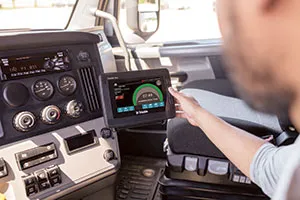
Positive reinforcement of good driving habits has helped reduce driver resistance to onboard technology, vendors say. (Trimble Transportation)
Cameras play a large role in Sutco’s current data gathering, Zubot said.
“Before there were cameras, it was always the big truck’s fault” if a traffic incident occurred, he said. “That no longer exists [with cameras], as we can prove that it was not our fault.”
Technology advancements also have paved the way for more fleet management tools and more vendors to provide these systems. Ten years ago, telematics companies had to be both a hardware and software company, which limited participation in the space, Demchuk said.
Now, “you can focus on just being an app developer” that accesses vehicle data without developing a unique system to collect the data, he said. “Algorithmic-type products continue to emerge in the space because you don’t have to become an entire telematics company to build a great business.”
Computing technologies have become more affordable and therefore more accessible to a greater number of fleets. At the same time, the speed, accuracy and accessibility of data analytics has improved.
“You can now run software directly in the driver experience on the vehicle in some way and process and provide insight in real time without having to dip all that data to the cloud,” Demchuk said. “You can find the needles in the haystack in real time on the device instead of having to compute an aggregate.”
Real-time data analysis shortens the driver bonus calculation time. This represents a significant shift from systems that just a few years ago struggled to generate meaningful insights faster than quarterly or monthly.
“You had to wait until a truck comes into the shop to do an ECM download to do the calculations,” Orban said. “I love this push toward weekly driver incentives… I’d love to get to a daily bonus if we could, but we’re not quite there yet.”
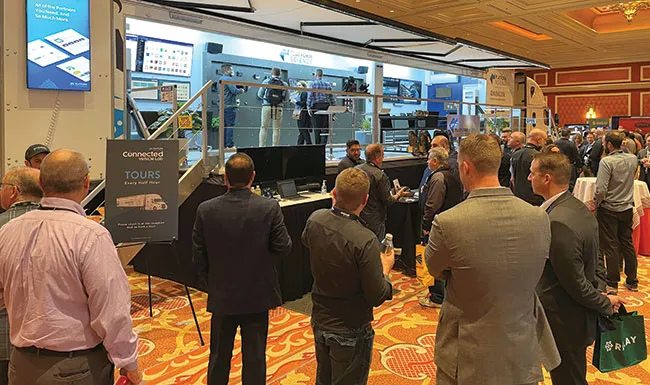
Platform Science and other fleet telematics providers are gathering data that can support merit-based driver pay initiatives. (Seth Clevenger/Transport Topics)
Real-time feedback allows drivers to make behavior corrections instantly to maximize their bonuses instead of waiting for monthly or quarterly reports. Quicker rewards provide more predictable and stable income, which influences driver loyalty.
“The built-up predictability leads to a more relaxed driver, more confident driver, safer driver, a driver who is more likely to feel valued and who is more likely to stay with the company,” Orban said.
Driver Acceptance of In-Cab Technology
Fleets and technology vendors initially observed notable resistance from drivers faced with adding in-cab technologies and apps, but attitudes have changed as drivers rack up time with the tools and experience the perks, such as incentive programs.
Although Sutco’s drivers initially resisted camera installations, they soon “learned that [cameras are] not there to pick apart their every move,” Zubot said.
Sources said resistance also has waned to other truck and driver monitoring technologies and apps, including electronic logging devices and telematics systems, as fleets increasingly use them for positive reinforcement — not just punitive measures.
“A very simple mindset shift” is occurring, Orban said.
“It’s not a negative, it’s not Big Brother, it is truly helping to identify these things the drivers are doing so well,” he said. “A driver incentive program has to be an incentive program; it can’t be a punishment program.”
Want more news? Listen to today's daily briefing below or go here for more info:


